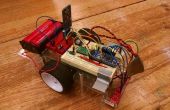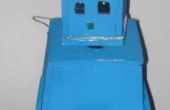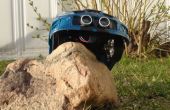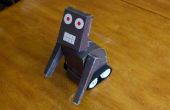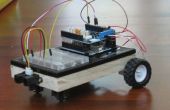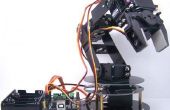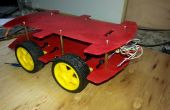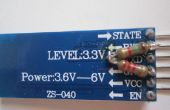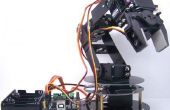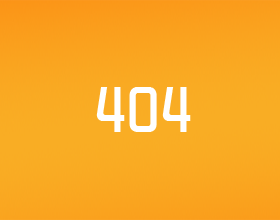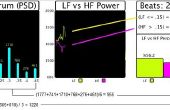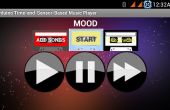Étape 8: Copiez ce croquis dans l’IDE et de télécharger à votre Arduino
/* Sketch written by ImMrRoboto to convert an RC truck into a robot using 3 PING sensors, an Arduino UNO and a SEEED Studio Motor Shield. It is built upon PING example code by Tom Igoe and a motor shield tutorial sketch by SEEED Studio. */ int pinI1=8;//define I1 interface int pinI2=11;//define I2 interface int speedpinA=9;//enable motor A int pinI3=12;//define I3 interface int pinI4=13;//define I4 interface int steerpinB=10;//enable motor B int speed_drive =420;//define the speed of drive motor int speed_steer =1524;//define the speed of steering motor const int pingPin_R = 7;//sets the pin for the PING sensor on the right side of the car const int pingPin_C = 6;//sets the pin for the PING sensor in the center side of the car const int pingPin_L = 5;//sets the pin for the PING sensor on the left side of the car long duration_C, inches_C,duration_R, inches_R,duration_L, inches_L; void setup() { pinMode(pinI1,OUTPUT); pinMode(pinI2,OUTPUT); pinMode(speedpinA,OUTPUT); pinMode(pinI3,OUTPUT); pinMode(pinI4,OUTPUT); pinMode(steerpinB,OUTPUT); } void loop() { int i; int j = 1; delay(5000); for(i=0; i<1; i*1){ j++; getping_all(); //all clear, no obstacles within 30" in any direction if(inches_C >= 30 && inches_R >= 30 && inches_L >= 30) { forward(); } //obstacle(s) within 0-6" range else if (inches_L < 6 || inches_C < 6 || inches_R < 6) { stop(); backward(); delay(1500); stop(); if(j%3 == 0){ //This if/else statement is designed to build a little "randomness" back_right(); //into the robot's movements, so it is less likely to become stuck back_right(); //in a loop, performing the same actions over and over which only. left(); j=1; } else{ back_left(); back_left(); right(); } } //obstacle(s) within 6"-12" range //obstacle on left and center and right else if (inches_R < 12 && inches_C < 12 && inches_L < 12) { stop(); backward(); delay(1500); back_left(); stop(); right(); forward(); } //obstacle on center OR left and right else if (inches_L >= 12 && inches_R >= 12 && inches_C < 12 || inches_C >= 12 && inches_R < 12 && inches_L < 12) { stop(); backward(); delay(1500); back_left(); stop(); right(); forward(); } //obstacle on left and center else if (inches_R >= 12 && inches_C < 12 && inches_L < 12) { stop(); backward(); delay(1500); back_left(); } //obstacle on right and center else if (inches_L >= 12 && inches_C < 12 && inches_R < 12) { stop(); backward(); delay(1500); back_right(); } //obstacle on right else if (inches_L >= 12 && inches_C >= 12 && inches_R < 12) { left(); left(); } //obstacle on left else if (inches_R >= 12 && inches_C >= 12 && inches_L < 12) { right(); right(); } //obstacle(s) within 12"-30" range //obstacle on left and center else if (inches_R >= 30 && inches_C < 30 && inches_L < 30) { right(); right(); } //obstacle on right and center else if (inches_L >= 30 && inches_C < 30 && inches_R < 30) { left(); left(); } //obstacle on right and left else if (inches_C >= 30 && inches_L < 30 && inches_R < 30) { forward(); } //obstacle on right else if (inches_L >= 30 && inches_C >= 30 && inches_R < 30) { left(); } //obstacle on left else if (inches_R >= 30 && inches_C >= 30 && inches_L < 30) { right(); } //obstacle on center else if (inches_L >= 30 && inches_R >= 30 && inches_C < 30) { if(j % 2 == 0){ left(); j=1; } else{ right(); } } } } void forward() {// turns on drive motor in forward and leaves it on analogWrite(speedpinA,speed_drive);//inputs speed_drive value to set the speed digitalWrite(pinI2,LOW);//turn DC Motor A move anticlockwise digitalWrite(pinI1,HIGH); } void backward()// {// turns on drive motor in reverse and leaves it on analogWrite(speedpinA,speed_drive);//inputs speed_drive value to set the speed digitalWrite(pinI2,HIGH);//turn DC Motor A move clockwise digitalWrite(pinI1,LOW); } void right()// { analogWrite(steerpinB,speed_steer); digitalWrite(pinI4,HIGH);//turn DC Motor B move clockwise digitalWrite(pinI3,LOW); forward(); delay(300); analogWrite(steerpinB,LOW); } void back_left()// { analogWrite(steerpinB,speed_steer); digitalWrite(pinI4,HIGH);//turn DC Motor B move clockwise digitalWrite(pinI3,LOW); delay(250); backward(); delay(500); stop(); delay(250); } void left()// { analogWrite(steerpinB,speed_steer); digitalWrite(pinI4,LOW);//turn DC Motor B move anticlockwise digitalWrite(pinI3,HIGH); forward(); delay(300); analogWrite(steerpinB,LOW); } void back_right()// { analogWrite(steerpinB,speed_steer); digitalWrite(pinI4,LOW);//turn DC Motor B move anticlockwise digitalWrite(pinI3,HIGH); delay(250); backward(); delay(500); stop(); delay(250); } void stop()//stop both motors { digitalWrite(speedpinA,LOW);// Unenble the pin, to stop the motor. digitalWrite(steerpinB,LOW);// Unenble the pin, to stop the motor. } void getping_C()//get distance from center PING { pinMode(pingPin_C, OUTPUT); digitalWrite(pingPin_C, LOW); delayMicroseconds(2); digitalWrite(pingPin_C, HIGH); delayMicroseconds(5); digitalWrite(pingPin_C, LOW); pinMode(pingPin_C, INPUT); duration_C = pulseIn(pingPin_C, HIGH); inches_C = microsecondsToInches(duration_C); } void getping_R()//get distance from right PING { pinMode(pingPin_R, OUTPUT); digitalWrite(pingPin_R, LOW); delayMicroseconds(2); digitalWrite(pingPin_R, HIGH); delayMicroseconds(5); digitalWrite(pingPin_R, LOW); pinMode(pingPin_R, INPUT); duration_R = pulseIn(pingPin_R, HIGH); inches_R = microsecondsToInches(duration_R); } void getping_L()//get distance from left PING { pinMode(pingPin_L, OUTPUT); digitalWrite(pingPin_L, LOW); delayMicroseconds(2); digitalWrite(pingPin_L, HIGH); delayMicroseconds(5); digitalWrite(pingPin_L, LOW); pinMode(pingPin_L, INPUT); duration_L = pulseIn(pingPin_L, HIGH); inches_L = microsecondsToInches(duration_L); } void getping_all() { getping_C(); delay(2); getping_R(); delay(2); getping_L(); delay(2); } long microsecondsToInches(long microseconds){ return microseconds / 74 / 2;} /* The above converts the time of the return to inches as explained here: <a href="http://learn.parallax.com/kickstart/28015" rel="nofollow">http://learn.parallax.com/kickstart/28015 </a>*/
